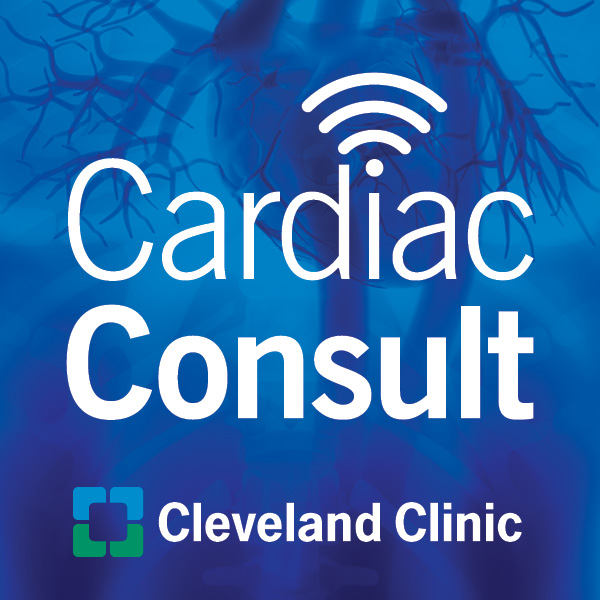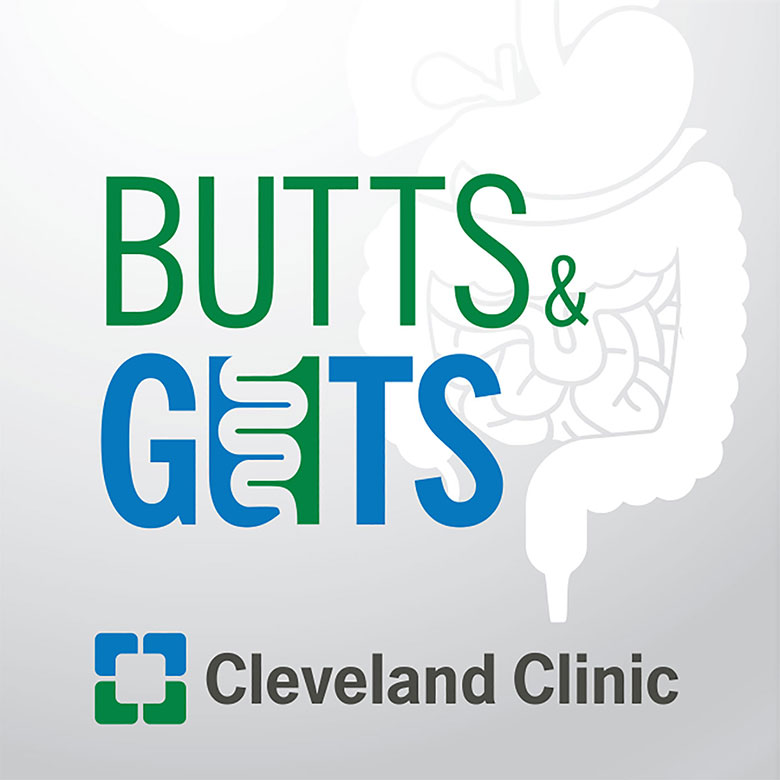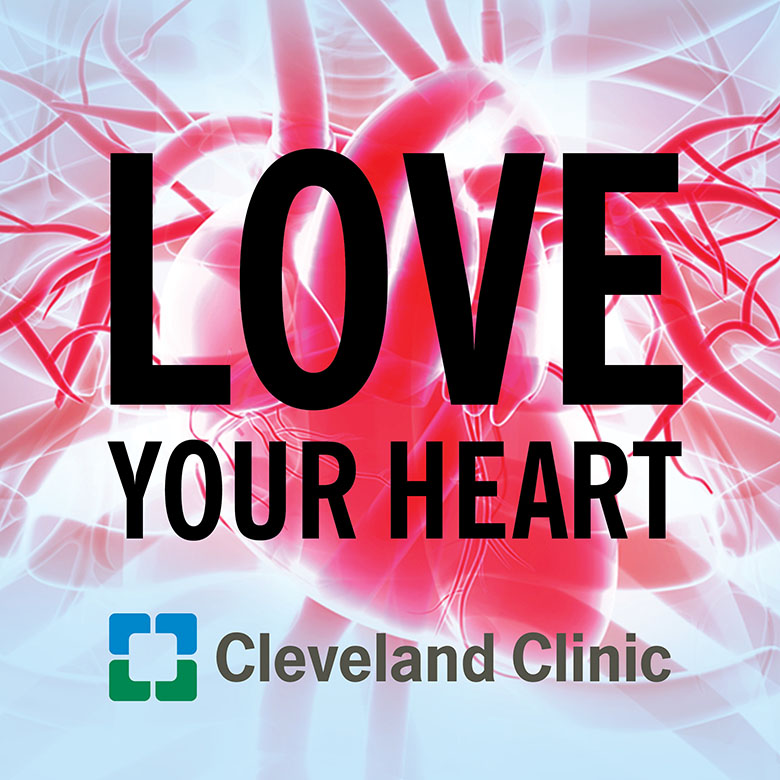The Evolution to Same Day Discharge After TAVR

In 2020, same day discharge and next day discharge accounted for 22.1 percent (n = 114 of 516) and 63.8 percent (n = 329 of 516) of outpatient TF-TAVR. Samir Kapadia, MD, Chairman of Cardiology, and Amar Krishnaswamy, MD, Head of Interventional Cardiology, discuss discharge planning considerations for patients having TAVR and the benefit of same day discharge if appropriate.
Mon. - Fri., 8 a.m. - 5 p.m. (ET):
toll-free 800.223.2273, ext. 49162
Subscribe: Apple Podcasts | Podcast Addict | Buzzsprout | Spotify
The Evolution to Same Day Discharge After TAVR
Podcast Transcript
Announcer:
Welcome to Cleveland Clinic Cardiac Consult, brought to you by the Sydell and Arnold Miller Family Heart, Vascular and Thoracic Institute at Cleveland Clinic.
Samir Kapadia, MD:
Hello everybody. I'm Samir Kapadia, Chairman of Cardiology here at Cleveland Clinic. And with me, I have Amar Krishnaswamy, he's the director of our Cath Lab and Head of our International section. He's very interested and accomplished in the fact that the how to make the TAVR safe, effective and minimally invasive. So today we are going to discuss the same day discharge. He just recently published the paper. So, Amar, maybe you want to highlight what are the most important takeaway messages from your paper that you just published, JACC Intervention.
Amar Krishnaswamy, MD:
Sure. Thanks, Dr. Kapadia, and thanks for joining us. So, we looked at approximately 520 patients that we treated with an outpatient transfemoral approach, transcatheter aortic valve replacement from March to December of 2020. Approximately 22 percent of those patients were discharged on the same day as their procedure. We compared that group of patients to the 330 patients or so who were discharged on the next day as sort of the comparator group. We also took those patients and compared them to the patients who were discharged in the year prior, just to make sure that overall, our TAVR procedure was similarly safe and so forth.
What we found is that in each of these groups of patients, the outcomes were entirely the same with regard to any of the specific concerns that one might have about discharged a patient from the hospital early. So, there was no difference in the rate of patients returning with any vascular complication, with stroke, with coming back for a pacemaker or some cardiac rhythm abnormality or certainly no difference in the 30-day survival of these patients. So, all of this ultimately showed us that discharging appropriately selected patients on the same day as their outpatient TAVR was entirely safe.
Samir Kapadia, MD:
Wonderful. Now, people always ask this question that what do you do about the conduction abnormality? So, let's say you did a patient who developed a left bundle branch block after TAVR. Can you still discharge the patient the same day or do you want to keep them? Or what kind of precautions do you take?
Amar Krishnaswamy, MD:
Yeah, so the short answer is that it's possible. So, in this group of patients we discharged on the same day, six of them actually had a new onset left bundle branch block immediately after the TAVR. However, all of them resolved their new onset left bundle by the afternoon ECG. So they went home with a conduction that was the same as the baseline. Generally speaking, a new onset left bundle of course has some concern if that disease will progress, similar to those patients who have a baseline right bundle branch block. And so, trying to understand how best to risk stratify those patients, whether it's for a same day discharge, next day or further observation can be complicated. The first sort of line, of course, is to look at the post procedure ECG, and that might provide some insights if there are changes in the conduction there that might require further observation.
We've also published work here from Cleveland Clinic where part of our risk stratification methods is to do a right atrial based pacing conduction study immediately after the TAVR. So, in those patients who don't have a baseline, or I should say a background of pacemaker and who don't have a background of Afib, we simply pull the temporary pacemaker wire from the right ventricle at the end of the procedure, place it in the atrium, and then pace the heart up to 120 beats per minute. And we have found that essentially if the heart is able to conduct up to 120 beats a minute after TAVR, there's nearly no risk of needing a pacemaker within 30 days. So, we use that kind of data along with the ECG to determine is a patient safe to discharge on the same day.
Samir Kapadia, MD:
And how about the groin complications? So, we have been using the groin access on a single side. A lot of people use it on both sides. What are the most important features that are necessary or most important precautions we take, or you take to make sure that patients are safe to go home from a groin camp complications standpoint?
Amar Krishnaswamy, MD:
Sure. This is very important, especially among the elderly patients, especially some of these are frail patients, all increasing the risk factors for a vascular access complication. So, as you mentioned, both the delivery of the valve access as well as the angiographic access are in the same side femoral artery. From a patient comfort perspective, I think this allows an earlier mobilization because they don't have access points on both legs. Secondly, we take a completion angiogram in all of the patients to make sure that there is no vascular oozing or vascular dissection or anything that might result in a delayed complication after discharge, whether it's on the same day or the next day frankly. And then, of course, after the bedrest that the patients take, all of these patients have a thorough physical examination of the vascular access site by either one of us as operators or by our Interventional Cardiology senior fellows who assist us with the procedures.
Samir Kapadia, MD:
And what are the most important pre-discharge investigations? So, ECHO, ECG, what are the things that you like to see before the patients go home and what is the most common follow up that is needed and how do we communicate to the providers who may be taking care of the patients once they are further discharged from the hospital?
Amar Krishnaswamy, MD:
Sure. So, I think as you've mentioned, the ECG and the echocardiograms as we discussed, are pretty routine follows as initial check boxes to say, can we consider this patient for same day discharge.
Samir Kapadia, MD:
Just in the cath lab or after even the cath lab and echocardiogram?
Amar Krishnaswamy, MD:
We always do a formal echocardiogram in the recovery area just because it gives us a much more thorough imaging of the patient, of their valve, of the ventricle because the ECHO techs can do a more thorough exam than when the patient is draped. The ECG is obtained of course immediately after they return to the recovery area. If there are any changes there from the baseline, we'll repeat another one to see if these changes are progressing or regressing. The physical examination, of course, is extremely important to make sure there's no worry there, whether from a neurologic standpoint or from a vascular access standpoint. And then the final is really the comfort of the patient and the family in mobilizing after the procedure and any infrastructure that exists at home to be able to leave the hospital.
As far as the sort of medical infrastructure exists, we always have the patient seen on the day after discharge by one of our nurse practitioners or physician assistants. They again, conduct a physical exam, speak with the patients, of course, and then also have an ECG and lab testing to make sure that there are no changes compared to the discharge day that we should follow up on. Assuming that all of these things are okay, we generally recommend a visit with their local provider, whether a physician or advanced practice provider within the approximately four-to-six-week time window, just to know that the patient is recovering appropriately. It's generally a good idea to do an echocardiogram somewhere around that timeframe as well, just to make sure that there are no changes in the valve function. The concern of valve leaflet thrombus is often present by that time if it will be there. And again, assuming everything is all right at that point, generally another visit at six months or 12 months, however the local providers generally follow on these patients.
Samir Kapadia, MD:
Wonderful. If you have a patient that is elderly, let's say 90 years of age, do you still feel comfortable discharging them the same day? Or is it even more important to discharge them the same day if the appropriate family support exists?
Amar Krishnaswamy, MD:
Yeah, I think the latter point is key. The reason to discharge patients sooner is not just that patients like to spend time in their own home or sleep in their own bed or have their own meals taken care of, but rather the safety of leaving the hospital sooner. We know that there's a lot of data to say that being in a hospital longer increases the risk of infections and especially among older or elderly patients, increases the risk of delirium, which itself is associated with a higher mortality. So especially in the patient you described the 90-year-old who has a valve replacement, if that patient has an uneventful, uncomplicated procedure with a family or social support that they can leave the hospital, I think it's actually the safest way for them to go home on the same day.
Samir Kapadia, MD:
And how about self-expanding valve versus balloon expandable valve, or does it make a difference?
Amar Krishnaswamy, MD:
We always, of course, try to practice based on the data that exists. In our series that we published that I described in the beginning of this conversation, this was primarily a series of balloon expandable valves. I want to say more than 97 percent were balloon expandable valves. There's another somewhat smaller series of same day discharge was also primarily balloon expandable valves. So, it's not to say that same day discharge after a self-expanding prosthetic is not feasible. I think using a similar algorithm to understand the pre- versus post-implant ECGs and the other clinical factors, it may still be appropriate, but the data there doesn't still exist in the same way as it does for balloon expandable platform.
Samir Kapadia, MD:
And do you also pay specific attention to how the valve was deployed? Let's say you have a left bundle branch block, but the valve was deployed very high, and you're thinking is that it is very unlikely to cause a future conduction problems, or if you put a self-expanding valve, which was very highly placed, does it make a difference to you to say that now you can discharge this patient or?
Amar Krishnaswamy, MD:
It's a good point. I think that it requires a very thoughtful analysis by each operator of the technique through which the valve was deployed and how things look afterwards. We have been quite methodical here in Cleveland Clinic to look at ways to reduce our pacemaker implantation rate after TAVR with national averages somewhere around nine to 10 percent. We've actually been able to reduce that to almost two and a half to 3 percent by implanting the valve higher. So, to your specific point about patients with a baseline right bundle branch block or a left bundle branch block, we are most frequently implanting our valves quite high in the annulus and with a minimal perturbation of the conduction tissue. So certainly, that factors into our overall level of comfort. In addition to the right atrial pacing strategy, I described earlier to say that it might be safe to discharge a patient early.
Samir Kapadia, MD:
So TAVR obviously is more difficult to discharge the same day compared to say, MitraClip or Watchman or mitral valve in valve because conduction abnormalities and things like that are not really the problem and the access is mostly venous access. So, what do you think is the reason why that is also not very popular to discharge the patients after the MitraClip and other things? Do you think this is a financial reason that some people are afraid that the one-day hospital stay is necessary for the admission? Or is that not a consideration? Because some people ask this question to me that if you discharge the same day, do you have the same reimbursement or not? And this question comes up. So, I just wanted to know if this has ever been a question asked to you in the different forums.
Amar Krishnaswamy, MD:
Yeah, it's a common question that comes up in most of the national meetings, and I think that there is a general concern about how earlier discharge pathways could affect reimbursement. I think it's certainly a theoretical concern, although in areas of coronary and peripheral intervention, this in fact has come to bear with respect to reimbursement. I think that TAVR is something that still very few people are going to feel confident to discharge patients in the same day and appropriately so, because there are last, I checked almost 800 different sites in the US performing TAVR. The number of TAVR that are conducted at any given site is extremely variable. And the quality of TAVR is also extremely variable. And a lot of the discharge pathway planning has to do with the quality of the procedure and specifically with regard to vascular complications and the risk of pacemaker implantation.
So, in truth, and I say this truly with humility, I don't think that this same day discharge pathway is really applicable to the majority of programs. I think it's more appropriate for high volume centers that have a very granular insight into their own specific data with regard to pacemaker implantation and complications that might be able to conduct this kind of a pathway. And so, in that regard, to answer the first point, I don't think that this should affect reimbursement because still the great majority of TAVR procedures conducted in the US will require at least one, if not two nights of hospital stay.
Samir Kapadia, MD:
Wonderful. I think this was a great discussion. This was a take home message, if I understood it correctly, is that it is an option that is available for appropriate patient in appropriate setting with great care of looking at the data, looking at the complications, looking at all the infrastructure that is needed to have a same day discharge. And this ultimately, if it is possible, has to be safe, has to be acceptable to the patients and families. And in that case scenario, it can be helpful for the hospital administration to have more throughput. Is that a fair assessment?
Amar Krishnaswamy, MD:
Yeah, absolutely.
Samir Kapadia, MD:
Okay, wonderful. Thank you very much everybody for joining.
Amar Krishnaswamy, MD:
Thank you.
Announcer:
Thank you for listening. We hope you enjoyed the podcast. We welcome your comments and feedback. Please contact us at heart@ccf.org. Like what you heard? Subscribe wherever you get your podcasts or listen at clevelandclinic.org/cardiacconsultpodcast.

Cardiac Consult
A Cleveland Clinic podcast exploring heart, vascular and thoracic topics of interest to healthcare providers: medical and surgical treatments, diagnostic testing, medical conditions, and research, technology and practice issues.



